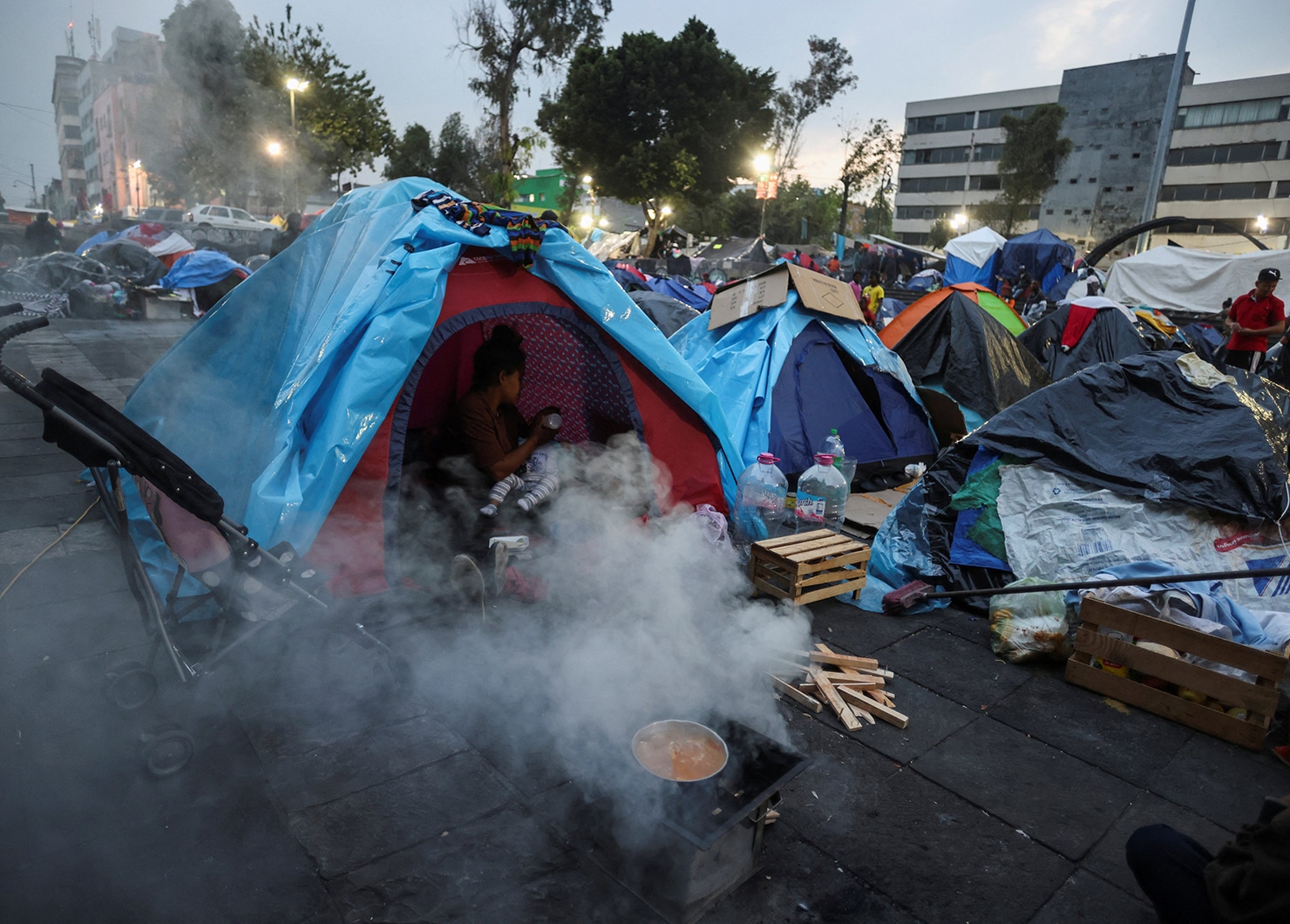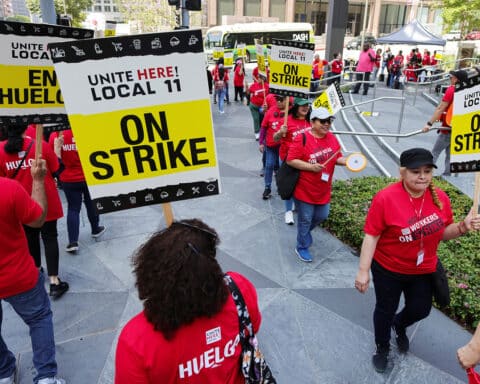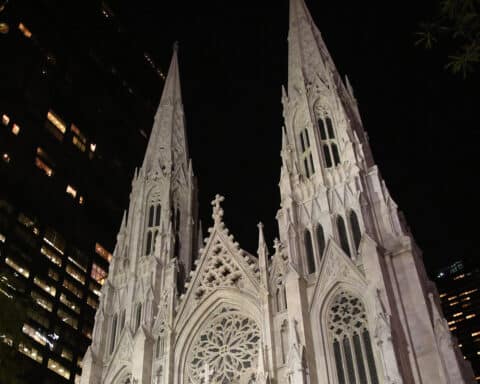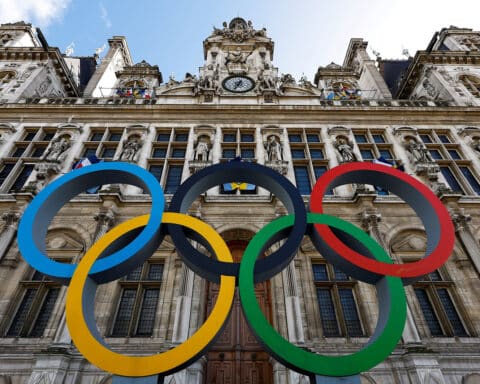MEXICO CITY (OSV News) — Eliana Polo, a Venezuelan migrant, tried reaching the U.S. border atop a freight train with her husband and 4-year-old daughter, but was forced off by security officials some 75 miles from the U.S. border at Eagle Pass, Texas.
Mexican immigration subsequently flew her family to the southern state of Tabasco, where they headed north again. This time, however, they stopped upon reaching Mexico City and explored their legal options.
“They returned me the first time,” Polo told OSV News from a Catholic-run migrant shelter in Mexico City. “I don’t want to risk that they’d send me back to Venezuela.”
Increasing stay in Mexico City
Migrants have long passed through the Mexico City area on northbound trips — an almost unavoidable act in a centralized country, where most roads lead to the capital.
But an increasing number of migrants are now staying put for long periods in Mexico City as they attempt to get their legal situations sorted out prior to risking crossing the U.S.-Mexico border — where drug cartels target them for kidnapping.
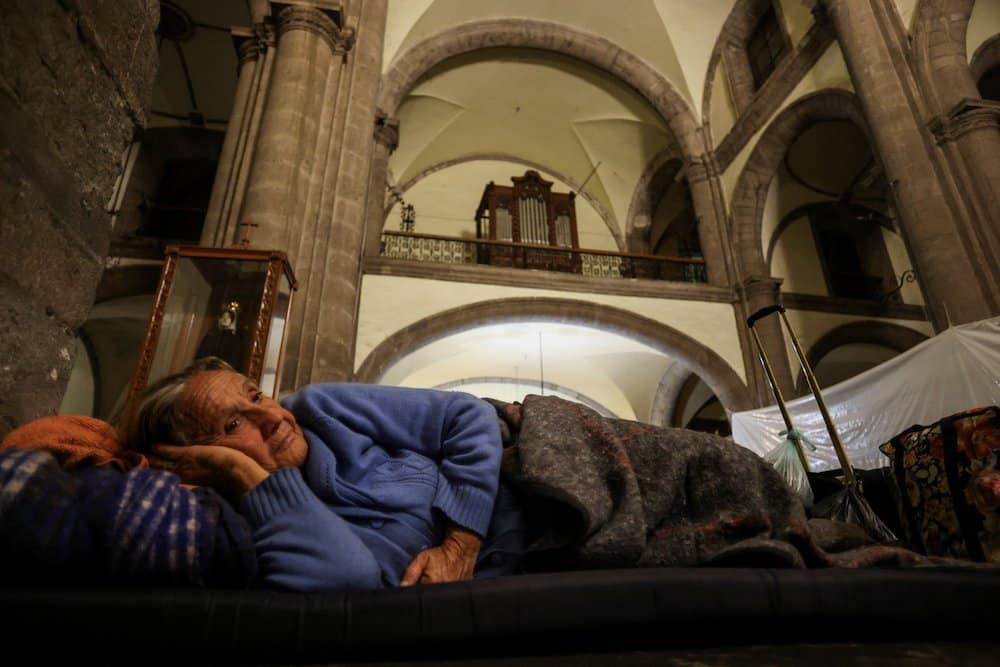
Mexico City in recent years has been seen as a safe option in a country where swaths of territory are disputed by drug cartels. Catholics working with migrants say the capital affords people without the proper papers the ability to avoid scrutiny from migration officials and often find work in the vast informal economy to sustain themselves while waiting.
“The only place where there are no (immigration) checkpoints is Mexico City,” said Father Benito Torres, pastor of the Santa Cruz y la Soledad Parish, who houses migrants in his 18th-century church and tends to a nearby migrant camp. He described the city as “a place where they can get their papers in order.”
Smartphone app for migrants
Catholics working with migrants attribute the swelling number of migrants to the CBP One smartphone application, which was introduced in January 2023.
The app allows migrants to secure appointments for entering the United States at official ports of entry. But it’s only accessible to applicants after they reach the Mexico City area. Appointments also are scarce, which “creates a bottleneck in Mexico City,” according to Father Torres.
Polo was one of the lucky ones. She received her appointment in March after two months of trying — staying the entire time with her family at the Scalabrinian-run San Ángel Arcangel shelter in Mexico City’s sprawling Iztapalapa borough. Her husband worked odd jobs in a nearby wholesale market, while she pitched in at the shelter by preparing meals for other guests. The family will fly to the border April 15 and enter the United States the next day — with the airlines accepting their CBP One appointment as a travel document.
Others are still waiting. Víctor, 22, fled Ecuador with his wife and 2-year-old son after his wife’s nail salon was extorted by drug cartel thugs. The family has waited two months in the Iztapalapa shelter for a CBP One appointment, but Víctor said his wife had found work in a nail salon — allowing him to look after their son as the family saves money for travel to the border.
“We want to do this properly,” Víctor said while waiting for an appointment.
Scalabrinian Father Juan Luis Carbajal speaks of a “CBP One effect” in the capital, which he attributes to “the desire for a more regulated and controlled migration.”
Challenges and waiting
An estimated 2,500 migrants are waiting in Mexico City — with 99% trying to use the CBP One app — according to a count by a coalition of nongovernmental organizations and Catholic shelters. Most are living in six camps, where they sleep in tents and lack basic sanitation.
“Mexico City has become the waiting room for those applying from here,” said Father Carbajal, director of migrant ministries for the Archdiocese of Mexico City.
“It’s the church giving humanitarian aid and the one making an effort at dialoguing with authorities to address this situation,” he said.
Government response
Church officials have advocated for street sweeping, rubbish collection and basic sanitation measures around the plazas hosting migrant camps, along with providing medical attention for children — many of whom are malnourished — Father Carbajal said.
The Mexico City government has not heeded many of his requests, he said. President Andrés Manuel López Obrador, meanwhile, has insisted his government “cares” for migrants and demanded the United States address what he considers the root causes of migration.
Social media reports and interviews with Catholics working with migrants suggest an increase in the number of migrants detained and sent back to southern Mexico. The Associated Press also described Venezuelans becoming “stuck” in Mexico due to increased enforcement — at the behest of the Biden administration.
Mexico has started repatriating Venezuelans, paying $110 monthly for six months to those returning voluntarily to the South American country. Father Carbajal saw little interest among migrants to return to Venezuela, where the economy collapsed due mismanagement and popular candidates for the upcoming presidential election have been disqualified.
“People don’t want to go back for a few hundred dollars,” Father Carbajal said. “They sacrifice and want to get to the United States where they can make even more dollars.”

